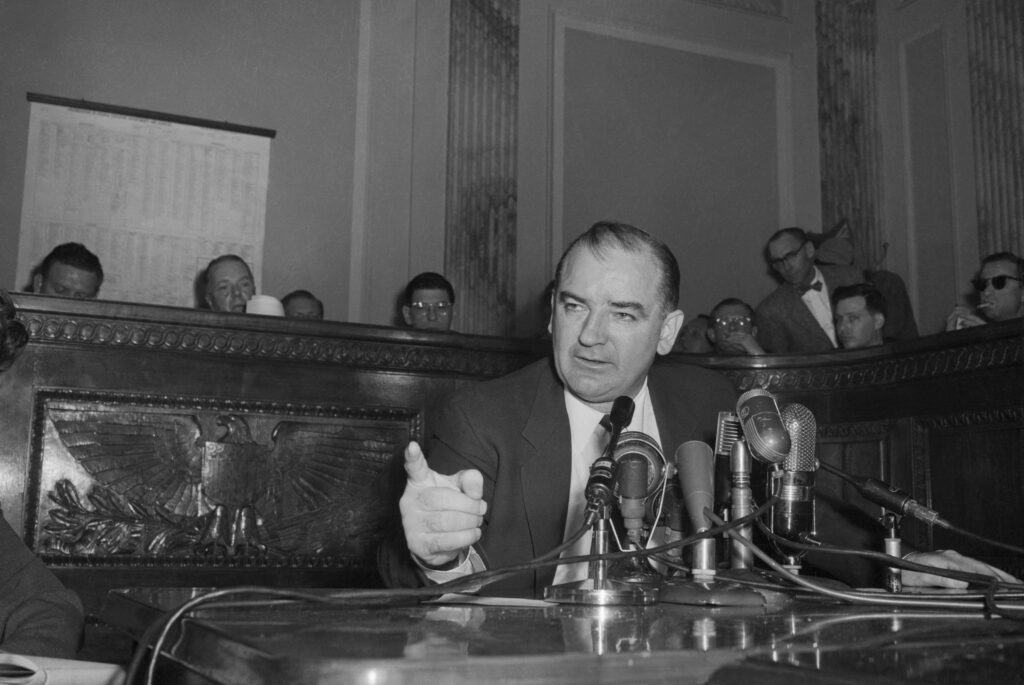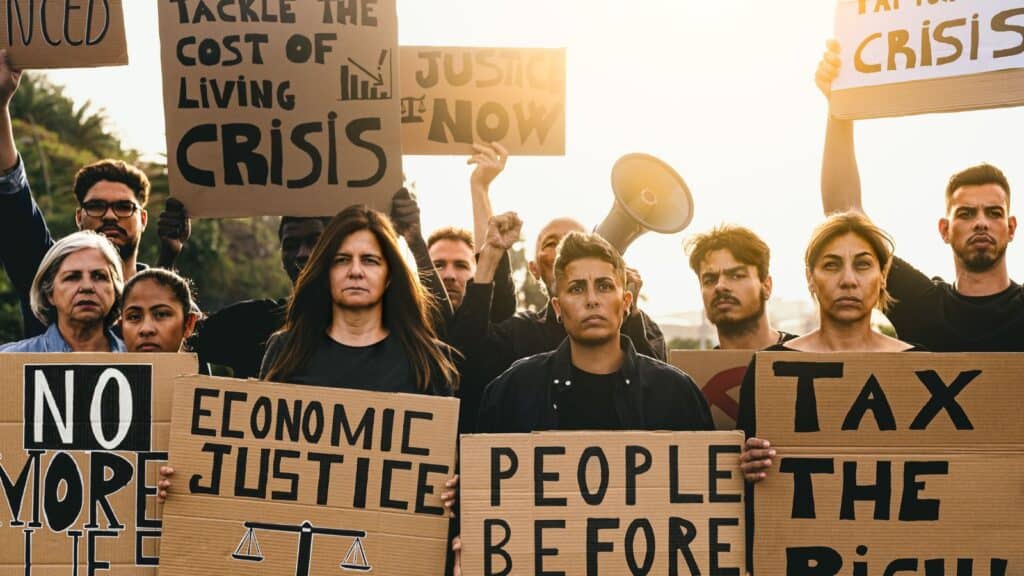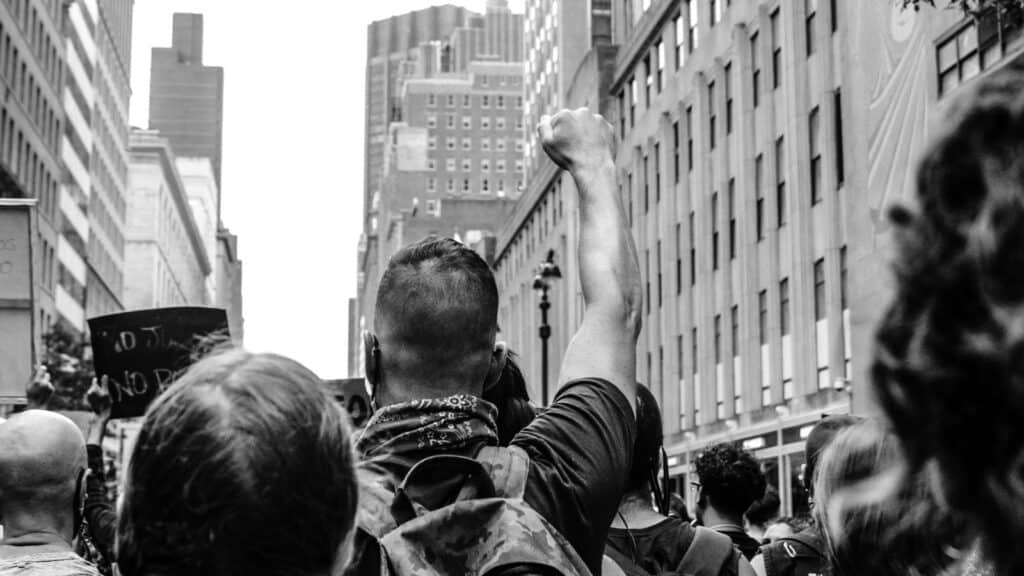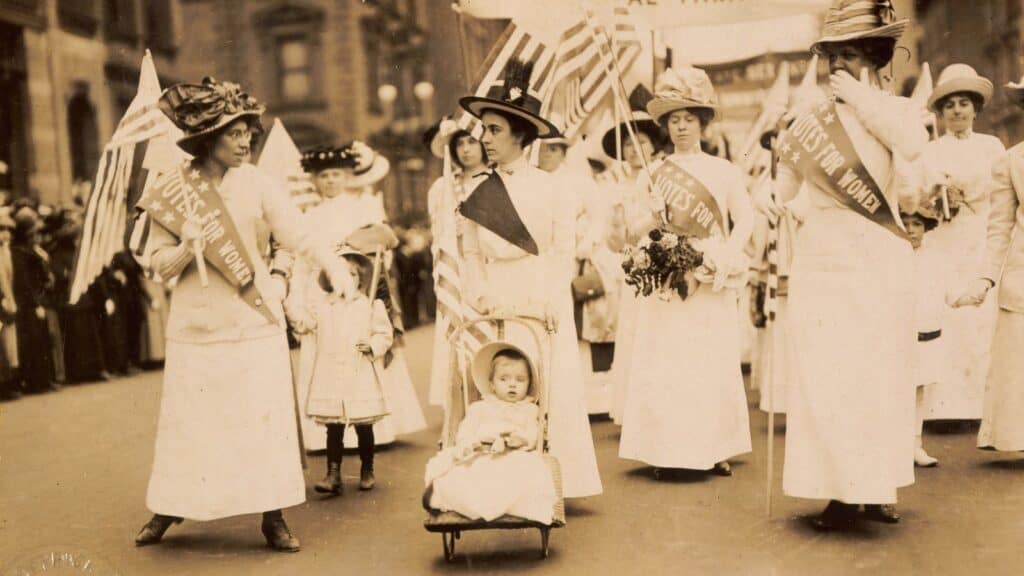Has the United States Ever Been This Politically, Socially and Culturally Divided in the Last 100 Years?
Every day we wake up to more news about how divided our country is and how increasingly angry and intolerant we are becoming of each other. It is not uncommon for many of us to feel anxiety and fear that we are headed in a direction we cannot return from. Has the United States ever been this politically, socially and culturally divided in the last 100 years? History says yes. And the influences on social divisions have been shifting.
Several notable instances that could be compared to current divisions:
The 1960s and Early 1970s:

This period was marked by profound social upheaval and division. The Civil Rights Movement, opposition to the Vietnam War, and the counterculture movement highlighted deep disagreements about civil rights, war, and social norms. Events such as the assassinations of Martin Luther King Jr. and Robert Kennedy, the 1968 Democratic National Convention protests, and the Kent State shootings underscore the intense societal conflicts of this era.
The Great Depression and New Deal Era (1930s):

The economic devastation of the Great Depression and the subsequent New Deal policies led to significant political and social divisions. Debates over government intervention in the economy and social welfare were highly contentious, with stark opposition from various business groups and political figures.
The McCarthy Era (Late 1940s to 1950s):

During the early Cold War years, fears about communism fueled widespread political paranoia and cultural division. Senator Joseph McCarthy’s anti-communist crusade led to accusations and investigations into thousands of Americans, significantly affecting the political climate and leading to widespread fear and suspicion.
Red Scare of 1919-1920:

Following World War I, the U.S. experienced the Red Scare of 1919-1920, characterized by a fear of Bolshevism and anarchism. This period saw intense social strife, including labor strikes, race riots, and the Palmer Raids against suspected radicals.
Following the 1917 Russian Revolution and the aftermath of World War I, revolutionary movements and organizations gained momentum globally, including within the United States. From November 1919 through 1920, the Department of Justice (DOJ) initiated the Palmer Raids, extensive operations aimed at immigrants, communists, socialists, radicals, and anarchists. The primary focus of these raids was individuals labeled as “the Reds,” those suspected of supporting the Russian revolution or belonging to communist or anarchist groups.
Civil Rights and Segregation:

The struggle over civil rights, particularly in the 1950s and 1960s, was a period of intense social and political division. The resistance to desegregation in the South, including the use of National Guard troops to enforce school integration, exemplifies this division.
A Continuing Historical pattern

Each of these periods shows that while the specific issues and contexts may change, the United States has faced several periods of intense division that reflect struggles over national identity, rights, and the direction of the country. The current political, social, and cultural divisions can be seen as part of a continuing historical pattern where significant changes and challenges provoke widespread debate and conflict.
Shifting Influence on Social Division

Over the past 100 years, social division in the United States has undergone significant transformations, influenced by a variety of social, economic, and political factors. Here’s a summary of how these divisions have evolved:
Early to Mid-20th Century

Racial Segregation and Civil Rights: Initially, the U.S. was characterized by explicit racial segregation, particularly under Jim Crow laws in the South. The civil rights movement in the 1950s and 1960s, highlighted by landmark events and legislation like Brown v. Board of Education and the Civil Rights Act, began to formally dismantle these legal barriers.
Economic Inequality: The period from the 1940s to the 1970s was marked by relatively lower economic inequality. This era, often referred to as the “Great Compression,” saw a more equitable distribution of income, partly due to high tax rates on the wealthy and strong labor unions.
Late 20th Century to Early 21st Century

Increasing Economic Segregation: From the 1970s onward, economic inequality began to increase dramatically. This shift was marked by rising income disparity and a decline in manufacturing jobs, leading to significant socioeconomic segregation. Wealthier, often more educated individuals, began to isolate themselves in specific communities, exacerbating social divisions.
Ideological Polarization: Political polarization increased significantly, particularly from the 1990s onward. The ideological gap between conservatives and liberals widened, with both groups increasingly clustering in geographically distinct areas. This polarization was reflected in the “red state-blue state” divide, which became more pronounced over time.
Recent Decades

Racial and Ethnic Dynamics: While racial segregation has decreased in some respects due to civil rights advancements, challenges remain. Issues such as police violence against minorities and systemic inequalities have continued to cause significant social strife.
Political and Cultural Polarization: Recent years have seen a deepening of political and cultural polarization, influenced by factors such as media fragmentation and social media. These platforms have often reinforced echo chambers, intensifying ideological divides.
Immigration and Changing Demographics: The U.S. has experienced significant demographic changes due to immigration, particularly from Latin America and Asia. These changes have sometimes fueled social tensions, particularly in areas experiencing rapid demographic shifts.
Summary

The nature of social division in the U.S. has shifted from more overtly institutionalized forms of segregation and inequality to more complex patterns of ideological and economic segregation. While progress has been made in certain areas, such as civil rights for minority groups, new forms of division have emerged, particularly related to political ideology and economic status. These divisions are increasingly characterized by geographical segregation, where different social, racial, and economic groups inhabit increasingly distinct spaces, both physically and ideologically.
How Technology Is Tearing Us Apart – And How We Can Stop It

Technology has played a significant and multifaceted role in social division in the United States, acting both as a catalyst for and a reflector of existing societal divides. Here are some key ways in which technology has influenced social division. READ: How Technology Is Tearing Us Apart – And How We Can Stop It
Experts Reveal The Alarming Truth About Adult Bullying

Until recently, anti-bullying advocacy has focused primarily on youth. However, adult bullying is on the rise and poses significant risks to our collective mental and physical well-being. As a journalist who has experienced online bullying for years, I sought to better understand the nature and impact of this rise and what, if anything, we can do about it. This article for The Queen Zone results from a series of interviews I conducted with experts in this field. READ: Experts Reveal The Alarming Truth About Adult Bullying
Join Us

Join us on this empowering journey as we explore, celebrate, and elevate “her story.” The Queen Zone is not just a platform; it’s a community where women from all walks of life can come together, share their experiences, and inspire one another. Welcome to a space where the female experience takes center stage. Sign up for our newsletter so you don’t miss a thing, Queen!






